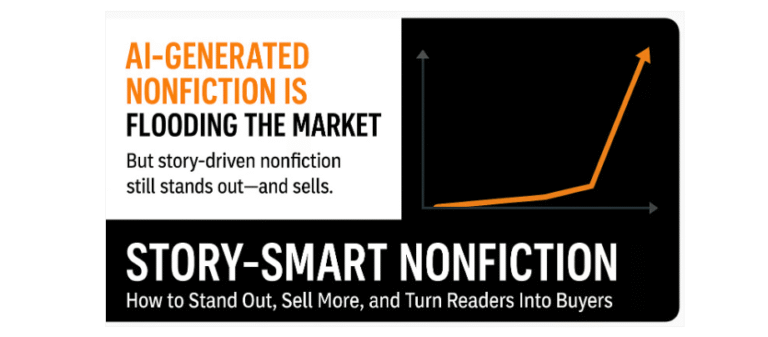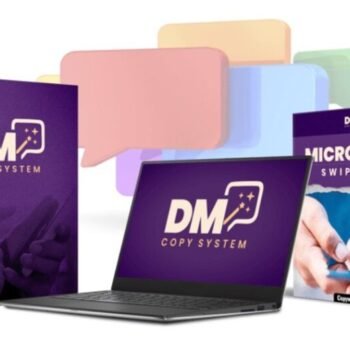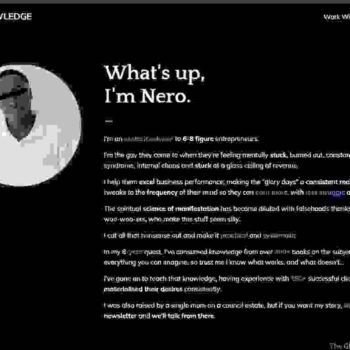Story-Smart Nonfiction by Geoff Shaw
$39.00 Original price was: $39.00.$15.00Current price is: $15.00.
Introduction
In today’s information-rich age, presenting facts in a compelling way is essential. Story-Smart Nonfiction by Geoff Shaw offers a transformative approach to education, blending storytelling with instruction to create memorable, motivating, and deeply engaging learning experiences. This guide will explore the principles, applications, benefits, and strategies behind this method, while positioning your content to outshine your competitors.
We’ll dive deep into the concept of “story-smart nonfiction,” how it reshapes teaching and writing, and how you can apply it to your own projects—whether classroom lessons, blogs, or professional training.
What Is Story-Smart Nonfiction?
At its core, this approach frames factual content in narrative form—treating each concept or lesson as a story. Rather than presenting information through a dry lecture or disconnected bullet points, you structure material around:
Characters (real or hypothetical) who experience conflict or change
A narrative arc (challenge, tension, resolution)
Emotional stakes or dilemmas to engage the learner
Scenes, dialogue, and descriptive detail to dramatize the learning
This method does not compromise accuracy. Instead, it embeds rigor into stories that grab attention, improve retention, and motivate learners to internalize content.
Why Narrative Belongs in Nonfiction Education
1. Memory and Recall
Stories trigger mental imagery, pathways, and emotional hooks. When learners “see” a scenario, they are more likely to remember it than an abstract description.
2. Engagement & Motivation
Humans are wired for stories. A narrative promises a question: What happens next? That draws readers or listeners through to the end, rather than losing interest mid-lesson.
3. Conceptual Transfer
By embedding ideas in real-world or fictional stories, learners can see abstract principles in action. That helps them apply the lesson to new contexts.
4. Empathy & Perspective
When characters navigate challenges, learners emotionally connect. That builds deeper understanding of complex or controversial topics without dry exposition.
5. Differentiation
Many educational resources offer the same facts. Using a narrative method sets your content apart—uniquely memorable and more shareable.
Key Principles of Story-Smart Nonfiction
To master this method, you’ll want to follow a set of guiding rules rather than rigid templates:
A. Choose a Central Story or Framework
Anchor your exposition around a narrative thread. For example, explaining photosynthesis via a bee exploring a flower garden through the seasons.
B. Introduce Conflict or Tension
Even in nonfiction, there should be a “problem” or obstacle—a scientific mystery, a historical dilemma, or a learner’s misconception. That tension drives the narrative forward.
C. Use Real (or Plausible) Characters
People, organizations, historical figures, or even personified abstract entities (like “Carbon”) can serve as protagonists or antagonists in your story.
D. Break into Scenes or Episodes
Rather than one long exposition, divide into scenes (mini stories) that each focus on a particular principle or event.
E. Keep Accuracy Front and Center
Facts must remain correct. Use storytelling as a delivery mechanism—not to distort, oversimplify, or mislead.
F. Build Back to Reflection & Transfer
After the narrative portion, pause to reflect on principles, ask guiding questions, and generalize the lessons to broader contexts.
G. Use Language & Imagery
Even when explaining technical or abstract material, sprinkle in vivid verbs, sensory detail, and metaphors.
Structural Blueprint: How to Build an Article or Lesson
| Section | Purpose | Techniques |
|---|---|---|
| Hook / Lead Story | Grab attention | A striking anecdote, question, or conflict |
| Scene 1 | Illustrate foundational concept | Mini-narrative introducing key actors or setting |
| Tension / Conflict | Expose the mystery or problem | Show what’s going wrong, know the stakes |
| Scene 2-3 | Explore causes, experiments, or viewpoints | Use characters or steps to dramatize |
| Turning Point / Solution | Reveal the breakthrough or insight | The “aha” moment in story form |
| Reflection / Analysis | Translate narrative to concept | Extract principles and rules |
| Application / Transfer | Show use cases | Prompt learners to apply in new settings |
| Conclusion | Return full circle | Bring closure or project forward |
Using that blueprint alongside the narrative strategy ensures your content remains coherent and deeply instructive.
Applications & Examples
Example in Science Education
Instead of explaining the water cycle abstractly, you might tell the story of a single droplet of water as it evaporates, forms a cloud, precipitates, flows to rivers, and returns to the ocean. The droplet faces “decisions” (which direction to flow, when to evaporate), “challenges” (temperature, pressure), and a journey that teaches the full cycle.
Example in History
Rather than listing dates and events in a battle, frame it through the eyes of a soldier or local citizen whose life is turned upside down. The narrative generates emotional stakes while you embed political, military, and social details.
Example in Business / Leadership
Explain complex management theories via a fictional startup’s struggles. Let leaders and employees deal with real dilemmas—resource constraints, team dynamics, failed experiments—and let the theory emerge from their decisions.
Example in Technical Writing / Tutorials
Teach a programming concept by following a developer building a project. The “story” is the project’s development—its bugs, fixes, iterations, user feedback—while the lessons on data structures or APIs emerge organically.
Benefits Over Traditional Approaches
Deeper retention: Learners recall stories far better than abstract lists
Higher completion rates: People stay with narrative-driven lessons
Greater shareability: Readers recommend content that “sticks”
Emotional connection: Learners invest themselves in characters’ journeys
Easier differentiation: Your content stands out from generic competitors
Competitors often settle for bullet-point summaries, slide dumps, or dry lectures. By contrast, a narrative method elevates your content into an experience.
Potential Challenges & Solutions
Challenge 1: Overdramatization
It’s easy to overdo fictional elements or stretch facts. Solution: Use narrative to serve the facts, not overshadow them. Always check your accuracy during editing.
Challenge 2: Complexity in Structure
Interweaving story and explanation can get messy. Solution: Use the structural blueprint. Clearly mark “narrative” vs. “analysis” sections.
Challenge 3: Inadequate Domain Knowledge
If you’re writing about advanced science or history, errors can slip in. Solution: Collaborate with subject-matter experts or use vetted sources, then wrap them in narrative.
Challenge 4: Resistance from Traditionalists
Some educators or audiences may prefer straightforward presentation. Solution: Offer a “narrative + summary” hybrid model—story first, then clear bullet-point takeaways.
Step-by-Step Guide: Crafting a Story-Based Nonfiction Piece
Choose your subject and core message
Decide the key idea or principle you want learners to take away.Find or invent a narrative
Identify characters, setting, conflict, stakes. If possible, base it on a real incident, case study, or composite.Draft a hook
Begin with an engaging scene, question, or event that introduces the stakes instantly.Divide into narrative scenes
Each scene highlights one sub-concept. Use concrete action rather than exposition.Interweave analysis
After each story segment or at crucial junctures, pause for explanation, reflection, or clarification.Craft transitions carefully
Smoothly shift between story and analysis so the reader doesn’t feel whiplash.Include active learning prompts
Add reflection questions, exercises, or mini-projects after narrative segments.Write a summary & call to action
Restate your main ideas plainly, then suggest further reading, exercises, or discussion.Edit for clarity and accuracy
Make sure your narrative doesn’t mislead, and technical aspects remain precise.Get feedback or peer review
Especially in technical or academic domains, have experts validate your content.
Tips to Outrank Competitors
Use long-tail narrative keywords
Phrases like “story-driven science lessons,” “narrative nonfiction teaching,” “educational storytelling method” complement your main concept.Provide exemplary full-length sample
Many competitors only explain; you should include a mini-lesson written by you using the method.Offer downloadable templates
A “story-nonfiction lesson planner” template or worksheet increases engagement and perceived value.Embed multimedia
Use videos, illustrations, or audio dramatizations of parts of your story.Promote user contributions
Ask readers to submit their own stories applying the method; create a community around it.SEO-friendly headers and structure
Use clear, descriptive headings (e.g. “Why narrative boosts memory,” “How to design a teaching story”) with relevant keywords.Link to authoritative sources
Cite studies on narrative learning, cognitive psychology, retention—this boosts your credibility.Update and expand over time
Continually add new examples, case studies, or feedback to signal freshness to search engines.
Example Mini-Lesson (Excerpt)
Hook Scene
Mina sat in a dusty attic, holding her grandmother’s faded journal. One line stood out: “In 1857 the monsoon failed three years in a row.” What did happen to her village?
Scene 1: Drought strikes
As crops withered and rivers dried, villagers wandered, hoping rain would return. A scientist from the distant city arrived, measuring rainfall, soil moisture, and analyzing climate patterns.
Conflict & Question
Why did the monsoon fail? Was it natural variation or a larger climate shift? The scientist’s tools initially produced conflicting data.
Scene 2: Experiments & Hypotheses
He gathered observations: tree rings, soil cores, historical records. He interviewed elders about weather patterns, combining qualitative stories with quantitative data.
Turning Point
He realized that a deforested ridge upstream altered local convection patterns. The village brush cleared too much land—disrupting local rainfall cycles.
Reflection / Theory
This micro-case illustrates: ecosystem feedback loops, land use’s effect on climate, and how qualitative interviews and quantitative methods combine.
Transfer Exercise
Ask: Can you think of a modern example where land use change impacted local weather? What data would you collect?
Final Thoughts
By embedding facts in emotionally resonant stories, the narrative nonfiction methodology redefines how education, communication, and public engagement happen. When crafted carefully and with respect to accuracy, it elevates your work above the typical informational content flooding the web.









